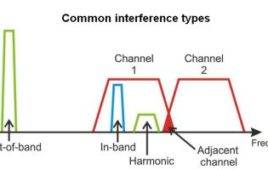Samsung Electronics and Korean operator SK Telecom have wrapped up an end-to-end 5G NR trial at 3.5 GHz during which they successfully surpassed speeds of 1 Gbps.
The trial was reportedly conducted in Samsung’s R&D facility located in the city of Suwon. The companies said they used Samsung’s 5G virtualized core, virtualized RAN, and Distributed Unit (including a baseband unit and radio unit), as well as a test device based on the most current 3GPP NR standards.
Samsung and SK Telecom indicated the tests used 80 MHz of 3.5 GHz spectrum to achieve speeds of over 1 Gbps and latency of 1.2 milliseconds. The latter was reportedly made possible by reducing the Transmission Time Interval (TTI) down to 0.25 millisecond. That TTI is a fraction – or one quarter – of that used in today’s LTE networks, the companies noted.
“We achieved another milestone today, taking 5G in to the sub-6 GHz spectrum for use cases and applications requiring wider area network coverage. The below 6 GHz spectrum has been identified by the industry as ideal for enabling 5G services such as autonomous/connected cars that require a wider area network,” Dongsoo Park, Samsung Electronics EVP and head of the Networks Business’ global sales and marketing team, observed. “Today’s trial with SK Telecom serves as a significant development in our collaborative efforts to accelerate 5G commercialization.”
The dive into 3.5 GHz comes as companies and governments across the globe explore suitable bands for 5G services. U.S. operators have mainly honed in on 28 GHz as the band of choice, a frequency Samsung noted offers wide bandwidths that enable the transmission of large volumes of data for video streaming and other uses.
But others, most notably Sprint, have focused on frequencies like 2.5 GHz that will be considered “low-band” spectrum in a 5G world. In fact, Sprint and Samsung last week announced a trial of their own that utilized massive MIMO on 2.5 GHz spectrum to deliver speeds of 330 Mbps on a single 20 MHz channel. More on that here. Samsung said sub-6 GHz frequencies like this will offer “wider and more stable coverage.”
Though several countries – including China and South Korea – are looking at 3.5 GHz as an option for global 5G coverage, that band has already been dedicated to the Citizens Broadband Radio Service (CBRS) in the United States. The current CBRS framework calls for sharing of the band using short-term licenses that offer “priority access” to what will otherwise be open airwaves. But telecom association CTIA and T-Mobile are trying to change that.
In recent filings with the FCC, both have asked the Commission to change the rules of CBRS to offer longer, 10-year licenses that cover larger areas. T-Mobile also wants the FCC to designate all 150 MHz of CBRS spectrum in each market open to priority access licensing – a move the Un-carrier said will promote more carrier investments in the band. More on that here.
Filed Under: Wireless • 5G and more, Telecommunications (spectrums)




